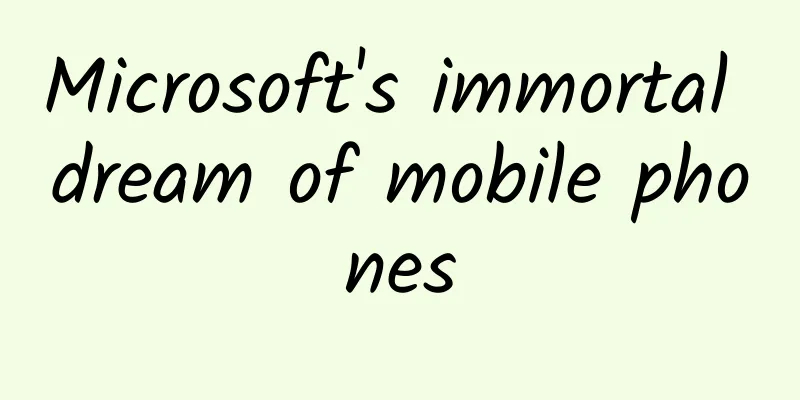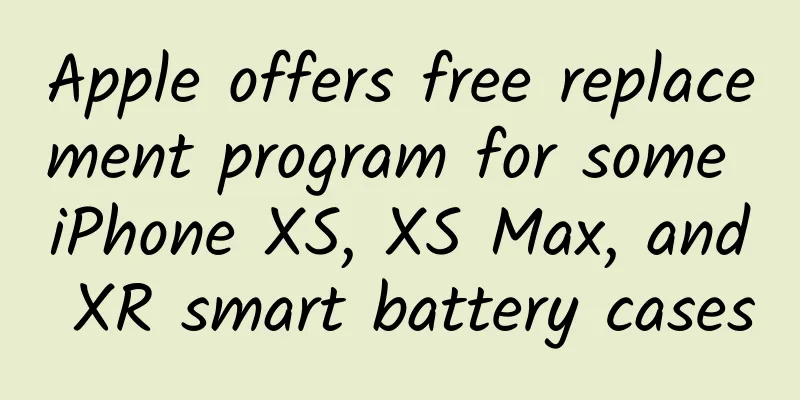Microsoft's immortal dream of mobile phones

|
The long-awaited Surface Duo, Microsoft's dual-screen phone will finally be released on September 10th, starting at $1,399. Pre-orders have been opened on the Microsoft Store. The first Surface phone is finally in the hands of consumers. From the product form, Surface Duo is not the first dual-screen mobile phone, but for Microsoft, Surface Duo carries a dream of integrating computers and mobile phones, which is another dream after countless attempts. Microsoft has an undying "mobile phone dream". It is no secret that Microsoft's dream of mobile phones has been a bumpy road, from building its own ecosystem to opening its mind to other ecosystems. Microsoft's dream of mobile phones has two parts: the dream of mobile phone systems and the dream of mobile phone hardware. Windows Mobile The origin of the mobile phone dream Windows Mobile is Microsoft's first real attempt at a mobile operating system. In addition to Windows Mobile, some manufacturers develop operating systems based on the Windows CE kernel (such as Mymobile for Meizu M8), but strictly speaking, these cannot be considered Microsoft's own products. Windows Mobile is also an operating system developed based on the Windows CE kernel. It was first used on the Pocket PC 2000 handheld computer in April 2000. The following year, Microsoft updated this handheld computer again and launched Pocket PC 2002. The Windows Mobile system was updated and adopted an interface icon design similar to that of Windows XP at the time. ▲ Windows Mobile 2003 system interface It was not until 2003 that Microsoft officially launched Windows Mobile as a (mobile) operating system product, naming it "Windows Mobile 2003", and updated the 2003 SE version the following year. In 2005, Microsoft abandoned the year-based naming method and directly switched to digital naming, launching Windows Mobile 5, but it did not support touch screen operations. It was not until the launch of Windows Mobile 6 two years later that touch screen support was officially added to its "Professional" branch version. In the 6.5 version two years later, touch screen operations were more reasonably optimized and a large number of new features were added. ▲ Windows Mobile 6.5.3 system interface Until 2010, when Microsoft updated Windows Mobile version 6.5.3, the Windows Mobile system basically came to the end of its life. ▲ Toshiba T-0B mobile phone (with Windows Mobile 6.5.3 system) Windows Mobile was born earlier than Apple's iPhoneOS and Google's Android. In the past seven years, manufacturers such as Dopod and Sony Ericsson have launched their own Windows Mobile phones. At that time, the Windows Mobile system was more about moving the interface and logic of the computer operating system to the mobile phone. It even inherited the shortcomings of the desktop-level Windows system at the time, such as large resource consumption and easy crash. Its subsequent fate was similar to that of Nokia's Symbian system. The bloated system no longer met the usage requirements of the new era of smartphones, and being eliminated by the times was an inevitable result. In the same year that Windows Mobile version 6.5.3 was launched, Microsoft officially released the new Windows Phone system to replace it, and the Windows Mobile operating system became history. Windows Phone Ecological ambition The first version of Windows Phone was Windows Phone 7, which was released in October 2010 and officially entered the Chinese market in March 2012. Windows Phone 7 is completely incompatible with previous Windows Mobile. This system is very special. The flat, tiled Metro UI design is very advanced, but it failed in the ecosystem and Microsoft's slow update speed. In two years, Microsoft launched two major update versions, 7.5 and 7.8, but the actual update content is not much. Windows Phone 7 is still based on the Windows CE kernel, but Microsoft's future plan is to move towards the more desktop-level Windows NT kernel. The development time of Windows Phone 7 is just too short to migrate to the new NT kernel architecture, so Windows Phone 7 was destined to be a transitional product from the day it was officially launched. In June 2012, a new version of Windows Phone based on the Windows NT kernel was released and named Windows Phone 8. Due to the difference in the kernel, although Windows Phone 8 is compatible with Windows Phone 7 applications, Windows Phone 7 is completely incompatible with applications developed for Windows Phone 8. More importantly, Windows 7 devices are completely unable to upgrade to the Windows Phone 8 system, which broke the hearts of many Windows Phone 7 users. The later update of Windows Phone 7.8 was just to appease users and update some small candies like UI - although this was also a helpless move by Microsoft for the future development of the system, consumers became the burial objects, and no matter what, Microsoft should bear some responsibility. ▲ Nokia Lumia 800 phone upgraded to Windows Phone 7.8 Windows Phone 8 shared the kernel with the desktop-level Windows 8 at the time, which shows Microsoft's ambition to integrate mobile and desktop terminals. Microsoft is making a big plan for its own ecosystem. ▲ Lumia phone equipped with Windows Phone 8.1 system Microsoft improved the basic functions of Windows Phone 8 through three version updates. It was not until version 8.1 launched in 2014 that the complete form of Windows Phone 8 was seen. However, it also ushered in the end of the life of the Windows Phone system, and the subsequent versions were inherited by Windows 10 Mobile. The development of Windows Phone is inseparable from the cooperation of OEM manufacturers such as Samsung, HTC, ZTE, and especially Nokia. However, compared with iOS and Android, the Windows Phone system runs too slowly and the ecosystem cannot keep up. On the day when the last version of Windows Phone was updated, its market share had already shrunk seriously. Windows 10 Mobile Great ideas and cruel reality Windows 10 Mobile can be seen as the product of Microsoft's integration of mobile and desktop. It can be seen as a sub-version of the Windows 10 system. Except for the inability to run x86 desktop applications, the interface is basically the same. UWP applications can be developed once to meet the needs of desktop and mobile applications. The idea is grand, but the reality is not so sexy. The first version of Windows 10 Mobile system was unveiled in February 2015, and it was planned to update some Windows Phone 8 phones in December 2015, but it was delayed again and again, and finally the push started in March 2016. In addition, Microsoft once promised to update the new system for all Windows Phone 8 system devices, but later reneged and only updated some old devices, which made the already flawed reputation of Microsoft's mobile phone system worse. ▲ Lumia 950 running Windows 10 Mobile (Photo: Churwin) In the first quarter of 2017, Windows Phone's market share was only 0.1%, not to mention Windows 10 Mobile's share. At the same time, more and more developers announced or defaulted to stop developing applications for Windows Phone and Windows 10 Mobile platforms. No matter how grand the conception of Windows 10 Mobile was, it could not stop the decline of Microsoft's Windows mobile system (including Windows Phone and Windows 10 Mobile). In October 2017, Microsoft officially announced that it had stopped developing the Windows 10 Mobile system, and officially stopped maintaining the system in January this year. Microsoft Lumia Everyone sighed when they heard this. In the process of Microsoft's development of mobile phone systems, Nokia is its most important partner. It can be said that if Nokia had not joined, Windows Phone might have ended long ago. From another perspective, the subsequent decline of Nokia's mobile phone business is also related to the development of the Windows Phone system. ▲ Lumia phone with Microsoft logo (Photo: Churwin) In 2013, Microsoft acquired Nokia's mobile phone business for RMB 5.44 billion, starting Microsoft's dream of developing mobile phone hardware. In 2014, Microsoft officially changed the name of Nokia Lumia to Microsoft Lumia, and then launched several low-end products whose design and workmanship were not as good as those of Nokia. It was not until October 2015 that Microsoft Lumia's flagship phone was officially launched - the flagship Lumia 950 and 950 XL equipped with Windows 10 Mobile. However, the poor workmanship and design were disliked by many consumers, and even more people felt sorry for the Lumia brand and even Nokia. Soon after, Microsoft completely abandoned Lumia. Surface Duo Open high, will it go down? Microsoft's mobile phone dream has had a very bumpy journey, which was caused by the current situation and to a large extent by Microsoft's own problems. In October 2019, Microsoft launched a mobile phone product belonging to the Surface product line - Surface Duo at the autumn conference. This time there is no Windows Phone, no Windows 10 Mobile, and no desktop-level Windows 10. Instead, it uses Google's Android system and starts dreaming again. Surface Duo uses the "hinge" structure design that Surface series is most proud of, which puts two screens together and can be opened and closed 360 degrees. Using Surface Duo, Microsoft wants to integrate its productivity with the Android ecosystem. In this way, Microsoft's mobile phone dream is actually easier to become a reality, and even helps Microsoft to cooperate with other brands and integrate Microsoft's ecosystem into more mobile phones. As expected of Microsoft, the Surface Duo, which has been delayed for more than a year, uses last year's Snapdragon 855 processor, 6GB of RAM, 128GB of UFS 3.0 flash memory, no 5G, and a battery capacity of only 3577mAh. It supports 18W fast charging, and the whole machine only has a single 11-megapixel camera above the right side of the screen. It is priced at US$1,399. Could it be that Surface Duo is another Microsoft hardware product that starts high and ends low? Microsoft's "mobile phone dream" is like this. When one is shattered, another is created. After going through hardships, Microsoft has tried different directions, but it is still the "king" and still has the capital to dream. By the way, although Windows Mobile, Windows Phone, and Windows 10 Mobile are gone, Microsoft's dream of a mobile phone system, or a system that integrates desktop and mobile terminals, is still brewing. I wish Microsoft's dream can come true one day, really come true... |
<<: What has changed and what hasn’t changed under mobile cross-platform technology
>>: WeChat’s “Tap, Tap” function can now be withdrawn. Can we finally say goodbye to “social death”?
Recommend
It’s the Year of the Rabbit! These famous Chinese science and technology scenes are worth being proud of
◎ Sun Yu, intern reporter of Science and Technolo...
Elderly care robots are here! They can make tea, feed cats, practice Wing Chun, play the piano, flip the spoon and play mahjong
Author Li Chuanfu Elderly care robots are here! S...
Where does the held urine go?
Audit expert: Zeng Ling Deputy Chief Physician of...
Such a marketing landing page is a bit of a waste of promotion costs!
Students who have listened to my speech must be i...
Is Yinlong's 10 billion yuan new energy project going to fail? Too fast expansion is to blame
Recently, a seizure order issued by the Jiangsu P...
Analysis of major mainstream information flow promotion channels in 2020
This article summarizes the characteristics of ma...
What is the international version of the health code? What is the specific use? How to apply? Attached is the application process!
What is the international version of the health c...
The conversion rate of information flow is only 10%, so where does the remaining 90% of traffic go?
The most painful thing in marketing promotion is:...
Advertising cost data for 35 categories across 9 channels for your reference!
In this article, the editor has compiled a large ...
There is something fishy in the XCode compiler – 51CTO analyzes the “Apple APP poisoning incident”
A virus hidden in the XCode compiler celebrates t...
How to use Tik Tok to promote and disseminate short video advertisements?
Any place with traffic is a suitable advertising ...
Help! How to put giant "cockroaches" in ramen!
Recently, a ramen restaurant in Taipei, China has...
A "new" fish was discovered in the Yangtze River? Good news for the "old" fish as well →
We have discovered a new Yangtze River elf! Accor...
Build a simple hybrid cross-platform mobile app with Ionic
introduce Since hybrid mobile development became ...
Useful information sharing | 3 tips to crack the "metaphysics" of short video material explosion
From reading articles, to looking at pictures, to...









